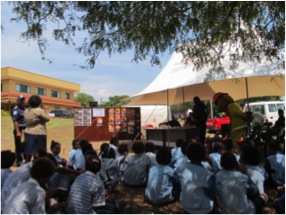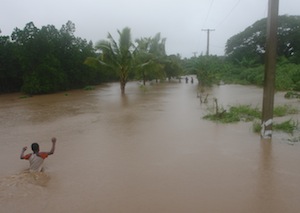 For twenty-six years scientists from around the world have provided advice and support to countries and territories in the South Pacific Region through STAR, the Science, Technology and Resources Network.
For twenty-six years scientists from around the world have provided advice and support to countries and territories in the South Pacific Region through STAR, the Science, Technology and Resources Network.
The most recent meeting, an integral part of the SPC/SOPAC Division meeting, took place in Nadi last week (16th – 21st October).
STAR Chair Dr John Collen, Associate Professor, School of Geography, Environmental and Earth Sciences, Victoria University, Wellington NZ, said that STAR was founded in 1983 in collaboration with the International Oceanographic Commission, so that the international scientific community could provide advice to SOPAC.
 The International Disaster Risk Reduction Day in Papua New Guinea was marked at a special event organised by the National Disaster Centre of Papua New Guinea and supported by United Nations Development Programme (UNDP) and Secretariat of the Pacific Community (SPC).
The International Disaster Risk Reduction Day in Papua New Guinea was marked at a special event organised by the National Disaster Centre of Papua New Guinea and supported by United Nations Development Programme (UNDP) and Secretariat of the Pacific Community (SPC). 



 For twenty-six years scientists from around the world have provided advice and support to countries and territories in the South Pacific Region through STAR, the Science, Technology and Resources Network.
For twenty-six years scientists from around the world have provided advice and support to countries and territories in the South Pacific Region through STAR, the Science, Technology and Resources Network. Inside this issue
Inside this issue Every year people in Fiji drown in floods. Most of these fatalities occur as a result of people making poor choices and entering the floodwater.
Every year people in Fiji drown in floods. Most of these fatalities occur as a result of people making poor choices and entering the floodwater. “Our intention is to provide a clear picture of the work that SOPAC continues to do in the region to build the resilience of Pacific people through better understanding of the risks faced, especially to natural hazards ” said Dr. Russell Howorth, Director of the SOPAC Division of SPC.
“Our intention is to provide a clear picture of the work that SOPAC continues to do in the region to build the resilience of Pacific people through better understanding of the risks faced, especially to natural hazards ” said Dr. Russell Howorth, Director of the SOPAC Division of SPC.

